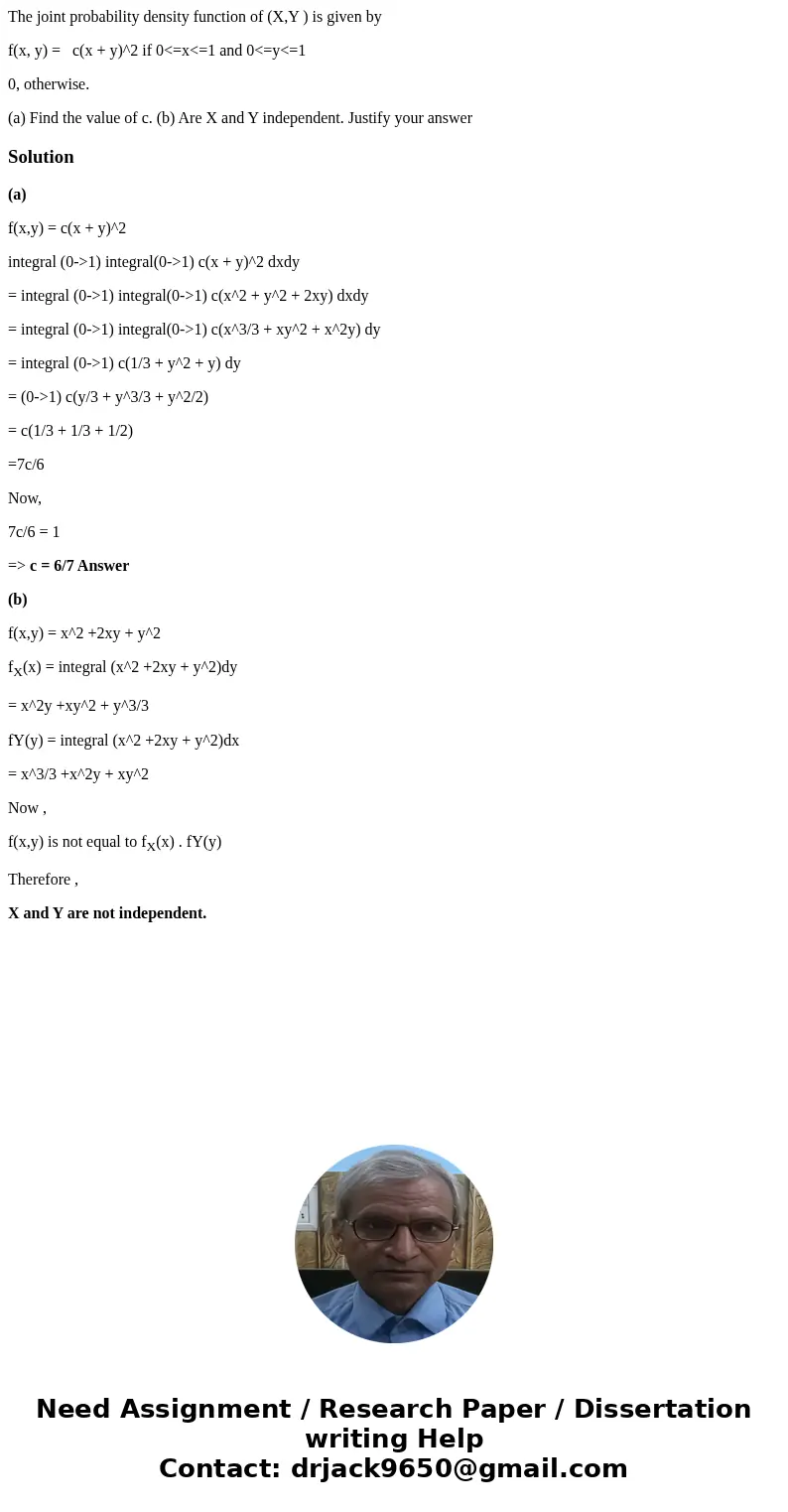The joint probability density function of XY is given by fx
The joint probability density function of (X,Y ) is given by
f(x, y) = c(x + y)^2 if 0<=x<=1 and 0<=y<=1
0, otherwise.
(a) Find the value of c. (b) Are X and Y independent. Justify your answer
Solution
(a)
f(x,y) = c(x + y)^2
integral (0->1) integral(0->1) c(x + y)^2 dxdy
= integral (0->1) integral(0->1) c(x^2 + y^2 + 2xy) dxdy
= integral (0->1) integral(0->1) c(x^3/3 + xy^2 + x^2y) dy
= integral (0->1) c(1/3 + y^2 + y) dy
= (0->1) c(y/3 + y^3/3 + y^2/2)
= c(1/3 + 1/3 + 1/2)
=7c/6
Now,
7c/6 = 1
=> c = 6/7 Answer
(b)
f(x,y) = x^2 +2xy + y^2
fX(x) = integral (x^2 +2xy + y^2)dy
= x^2y +xy^2 + y^3/3
fY(y) = integral (x^2 +2xy + y^2)dx
= x^3/3 +x^2y + xy^2
Now ,
f(x,y) is not equal to fX(x) . fY(y)
Therefore ,
X and Y are not independent.

 Homework Sourse
Homework Sourse